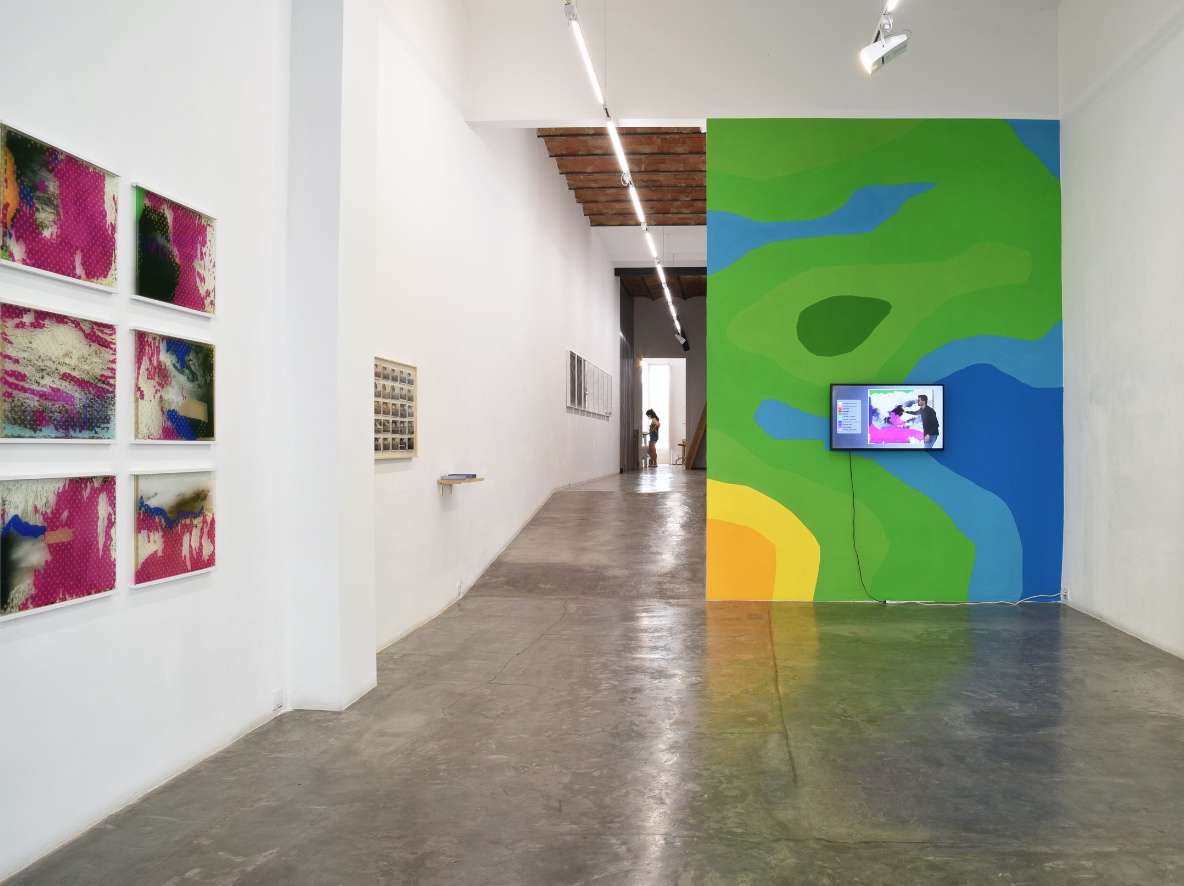Andrés Galeano – Lost clouds archives

Andrés Galeano – Lost clouds archives
According to Andrés Galeano, photography operates in a similar way to clouds: it connects the Earth with the celestial, channels the human desire for transcendence, their will to project and ascend, and produces images that aspire to represent a meaning and depth that transcends worldly life. Galeano, who identifies his artistic practice as post-photography and manifests his work in publications, installations, photographic collages, videos and performances, has been interested in exploring these connections between photography and the celestial for years, with a special interest in how the photographic medium has analysed these two elements.
Alexandra Laudo
Lost clouds archive then starts from the first SMC (Servei Meteorological of Catalonia, 1921–1939) to undertake an investigation for different Catalan archives following the lead of their protago-nists: the patron and passionate meteorologist Rafael Patxot i Jubert, the photographer Josep Pons i Girbau, the Campo family living at the Fabra Observatory in Barcelona and the first director of the SMC, Eduard Fontser..
The project plays with semantic ambiguity, present in our Romance languages, from the weather (in the he project plays with the semantic ambiguity present in our Latin languages of the words “tiempo” and “temps”, which can be both time and weather, and “fondo” and “fons”, which can be both ar- chive or background. It is this point where the materials of the ar- chive of the SMC intertwine with the studio photography of that time and its ethereal, weightless and celestial staging.
Fons perdut de núvols [Lost Clouds Archive] is a project that takes as starting point two photographic practices that have clouds as a central element of study. One of them is the background of cloudy and foggy skies, repeatedly used as scenery in photographic studios, especially during the second half of the 19th century. These backgrounds were used in order to place subjects in an abstract frame that enhanced their figures. They are, then, a forerunner to today’s digital wallpapers and photocalls, as well as the other filters and effects used in digital photography. Interestingly, most of these contemporary digital self-portraits are published on the web, that is, in what is known as the cloud, a terminology that again insists upon these connections between photographic practice and the celestial imaginary. With his idealised representation of the sky, Galeano also reads these backgrounds as manifestations of an aspiration to immortality and transcendence that is inherent in the practice of photography. In Fons perdut de núvols Galeano references the archives used in the Barcelona photographic studios of Aníbal Baró, Napoleón, Audouard and Daguerre, among others. Galeano’s project, then, is also a valuable exercise in reviewing the history of photography in Catalonia, and an activation, from the place of contemporary visual arts, of our historical photographic heritage.
This project is a co-production between the gallery RSC and the M|A|C of Mataró and it is shown simultanously in two complementary exhibitions. Both samples are accompanied by an artist’s book, FPN, published in three limited editions of 150 copies each: in Catalan, Spanish and English.
The artist’s publication, FPN, works as one more piece of the exhibition, analyzing the role meteorology plays in photography and vice versa, photography in meteorology. Its structure is inspired by the mythical International Atlas of Clouds and the States of the Sky, with one textual part and another of lamines with images.
Its 13 x 18 cm format is a reference to the most common format of glass clichés that were used to photograph clouds on a daily basis. And the box alludes to both the photo (positive and negative) and the archives and transport boxes – which, by the way, were never destroyed because of the scarcity of wood and which should have been used to exile the entire SMC file to Norway during the Spanish Civil War and thus save it from a possible destruction or plunder.
FPN is crafted from meteorology, artistic restoration, and photography to reflect time as an artistic agent and the aesthetic of the degradation that it produces. The publication shows a small collection of images – one of many possible – to rehearse one more chapter in the study of the metaphysical sky of the photographic medium and complement it with texts by specialists in meteorology, history of photography and contemporary art.
Fons Perdut de Núvols, presentation of the book by Andrés Galeano